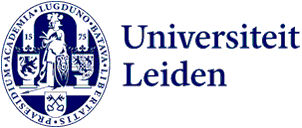
First MIRI-image by the James Webb Space Telescope
The alignment of the James Webb Space Telescope is complete. The space observatory is able to capture sharp, well-directed images with each of its four powerful scientific instruments on board. The MIRI instrument, on which Professor of Molecular Astrophysics Ewine van Dishoeck also worked, was the last of the instruments to cool down to its operating temperature of -266 degrees Celsius earlier this month.

After completing the seventh and final stage of the telescope's alignment, the next and final set of preparations will now begin: the commissioning of the scientific instruments. This process of setting up and testing the instruments will take about two months before scientific work begins in the summer.
The first pictures of James Webb
The alignment of the telescope with all of Webb's instruments can be seen in a series of images that cover the entire field of view of the observatory.
The Dutch stakeholders are relieved that all critical milestones have been achieved. Ewine van Dishoeck, MIRI's European co-PI: 'The past few months have been very exciting. We are now looking forward to the first scientific data from Webb, which we expect in the summer. It is also great to see from the published images that MIRI is not only seeing stars (point sources) but also dust!'
The heart of the MIRI spectrometer
Dutch designers, engineers and astronomers have worked on two of the four scientific instruments on Webb in the last 25 years: MIRI and NIRSpec. The heart of the MIRI spectrometer was designed and built in the Netherlands under the leadership of the Optical-Infrared Group of the Netherlands Institute of Astronomy (NOVA). In addition to Dutch universities, TNO, ASTRON and SRON contributed to the development of this spectrometer. (More info in this video)
Optical performance of telescope better than predicted
The telescope's optical performance is better than the engineers' most optimistic predictions. Webb's mirrors now send fully focused light from space to each instrument, and each instrument successfully takes images. The image quality delivered to all instruments is "diffraction-limited", meaning that the fineness of detail that can be observed is as good as physically possible given the size of the telescope. From this point on, the only changes to the mirrors will be very small, periodic adjustments to the primary mirror segments.
Commissioning of each instrument
Now the Webb team will work on the commissioning of the scientific instruments. Each instrument is a highly sophisticated set of detectors, equipped with unique lenses, masks, filters and custom-made equipment. With the formal completion of the telescope alignment, some of the key personnel involved in commissioning each instrument have arrived at the Mission Operations Centre at the Space Telescope Science Institute in Baltimore, USA.
This article was published on Astronomie.nl
Photo: NASA/Webb
